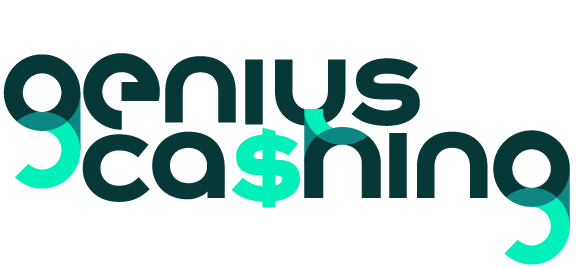Th e “Too Many Tools” Trap: How SaaS Overload Eats Your Budget

In 2025, how SaaS overload eats your budget isn’t just a catchy phrase it’s a financial sinkhole for businesses chasing digital efficiency.
Anúncios
Software-as-a-Service (SaaS) tools promise streamlined operations, enhanced productivity, and competitive edges. Yet, the unchecked accumulation of subscriptions can spiral into a costly trap.
Companies, dazzled by shiny new platforms, often fall prey to redundant tools, overlapping features, and ballooning expenses.
This article dives into the hidden dangers of SaaS sprawl, offering practical strategies to reclaim control over your budget.
We’ll explore why this issue persists, how it impacts financial health, and actionable steps to avoid the trap. Ready to stop the budget bleed? Let’s uncover the truth behind SaaS overload.
Anúncios
The allure of SaaS lies in its accessibility cloud-based solutions are easy to adopt, scalable, and often marketed as must-haves.
However, the ease of clicking “subscribe” masks a deeper issue: businesses rarely pause to assess whether new tools truly add value.
A 2025 survey by SaaS Capital reveals that 55% of equity-backed SaaS companies operate at a loss, partly due to unchecked spending on redundant software.
This statistic underscores a critical reality overspending on tools doesn’t just strain budgets; it erodes profitability.
The modern workplace, with its endless array of apps, risks becoming a digital hoarder’s paradise, where tools pile up faster than you can say “free trial.”
Why does this happen? The answer lies in human nature and market dynamics. Decision-makers, eager to stay ahead, often adopt tools without a clear strategy.
Marketing teams chase SEO platforms, sales teams demand CRMs, and IT departments insist on security add-ons. Each choice seems justified in isolation, but collectively, they create a chaotic ecosystem of overlapping functionalities.
Picture a kitchen with five blenders each slightly different, but none essential beyond the first. This is how SaaS overload eats your budget: by sneaking in under the guise of necessity, draining resources one subscription at a time.
The Hidden Costs of SaaS Sprawl
SaaS sprawl doesn’t just inflate budgets; it creates inefficiencies that ripple across operations. Duplicate tools lead to fragmented workflows, confusing employees and slowing processes.
For instance, a marketing team using three analytics platforms say, Google Analytics, Ahrefs, and Semrush might waste hours reconciling conflicting data.
This redundancy diverts time from strategic tasks, indirectly costing more than the subscription fees. Companies often overlook these hidden costs, focusing only on monthly invoices.
Beyond workflow chaos, SaaS sprawl increases security risks. Each tool is a potential entry point for cyber threats, especially if poorly managed.
A 2025 report notes that businesses with over 100 SaaS apps face 30% higher risks of data breaches. Unmonitored subscriptions also lead to “shadow IT,” where employees adopt tools without oversight, further complicating compliance.
These risks compound the financial burden, making how SaaS overload eats your budget a multifaceted problem.
++ Why Revenue Growth Can Still Lead to a Deficit (and How to Fix It)
The human cost is equally significant. Employees juggling multiple platforms struggle with learning curves and context-switching. A sales rep toggling between HubSpot, Salesforce, and a niche CRM wastes energy that could be spent closing deals.
This cognitive overload reduces productivity, frustrates teams, and undermines the very efficiency SaaS promises. The irony? Tools meant to simplify work often create more chaos.
Consider a mid-sized tech startup, “TechTrend Innovations,” which adopted 15 SaaS tools in 2024. By mid-2025, they noticed a 20% budget overrun, with half attributed to unused or overlapping subscriptions.
Marketing used both Hootsuite and Buffer for social media, while IT ran parallel project management tools like Asana and Trello.
The result? A $50,000 annual overspend and a team bogged down by redundant workflows. This example shows how SaaS overload eats your budget in real-world terms.

Why Businesses Fall Into the Trap
The SaaS market thrives on FOMO fear of missing out. Vendors craft compelling pitches, promising game-changing features that seem indispensable.
A 2025 study by SimpleTiger notes that SaaS companies allocate 8% of revenue to marketing, fueling aggressive campaigns that pressure buyers.
Decision-makers, bombarded with buzzwords like “AI-powered” or “seamless integration,” often sign up without rigorous evaluation. The result is a cluttered tech stack.
Departmental silos exacerbate the issue. Marketing, sales, and IT often operate independently, each subscribing to tools without cross-team coordination. A finance team might use QuickBooks, while operations adopts FreshBooks, unaware of the overlap.
Also read: Profitability Is Not a Lifeline: Understanding True Financial Health
This lack of alignment drives up costs, as no one sees the full picture. How SaaS overload eats your budget becomes clear when departments act as isolated fiefdoms.
Shiny object syndrome also plays a role. New tools promise cutting-edge features, tempting companies to upgrade or switch platforms prematurely.
For example, a business using Slack might be lured by Microsoft Teams’ latest AI add-on, despite minimal differences in core functionality. This chase for the “next big thing” fuels subscription creep, quietly draining budgets.
Take “GrowEasy Analytics,” a fictional B2B firm that fell for a flashy AI-driven CRM in 2025. Convinced it would boost conversions, they signed a $10,000 annual contract, only to find it duplicated their existing platform’s features.
By year-end, they’d spent $15,000 on unused tools, with no tangible ROI. This scenario illustrates how SaaS overload eats your budget through impulsive decisions.
Strategies to Combat SaaS Overload
Taming SaaS sprawl starts with visibility. Conduct a thorough audit of all subscriptions, mapping each tool’s purpose, cost, and usage.
Tools like DottedSign or SaaS management platforms can streamline this process, revealing redundancies. For instance, identifying two email marketing platforms with 80% feature overlap can save thousands annually. Regular audits keep spending in check.
Centralize decision-making to avoid rogue subscriptions. Appoint a SaaS gatekeeper perhaps a CFO or IT lead to vet new tools.
This ensures purchases align with business goals. A 2025 guide by Sage emphasizes centralized budgeting for SaaS, noting it cuts overspending by 15%. A gatekeeper can ask: “Does this tool solve a unique problem?”
Reas more: The Cash Flow Illusion: Why Your Business “Feels” Fine but Is Bleedin
Prioritize multi-functional platforms over niche tools. Instead of separate apps for project management, time tracking, and invoicing, consider an all-in-one like ClickUp.
This reduces costs and simplifies workflows. TechTrend Innovations, from our earlier example, consolidated three tools into one, saving $30,000 annually. Consolidation is key to stopping how SaaS overload eats your budget.
Negotiate contracts ruthlessly. SaaS vendors often offer discounts for annual commitments or multi-user plans.
A 2025 budgeting guide suggests reviewing renewal terms quarterly to avoid auto-renewal traps. For example, renegotiating a CRM contract might shave 20% off the price, redirecting funds to critical areas.
Building a Lean SaaS Strategy
A lean SaaS strategy hinges on data-driven decisions. Use analytics to track tool usage and ROI. If a platform’s adoption rate is below 50%, it’s likely redundant.
Tools like Ahrefs can monitor marketing tool performance, ensuring every dollar spent delivers value. Data cuts through the hype of vendor promises.
Engage employees in the process. Solicit feedback on which tools they actually use versus those gathering digital dust.
A 2025 survey found that 40% of SaaS subscriptions go unused after six months. Involving teams ensures buy-in and identifies practical needs, preventing wasteful purchases.
Set clear criteria for new tools. Before subscribing, ask: Does it integrate with existing systems? Will it scale with growth?
A small e-commerce firm avoided a $5,000 analytics tool by confirming it duplicated their current platform’s features. This discipline prevents how SaaS overload eats your budget through unchecked acquisitions.
Finally, embrace a culture of minimalism. Encourage teams to question the necessity of each tool. A “less is more” mindset fosters efficiency, freeing up budget for innovation.
Regular training on existing tools can also maximize their utility, reducing the urge to chase new ones.
The Role of Forecasting in SaaS Budgeting
Effective forecasting prevents SaaS overload by aligning spending with goals. Use rolling forecasts to adapt to market shifts, as static budgets often miss the mark.
A 2025 report by Fincome advocates combining top-down and bottom-up forecasting for accuracy. This approach balances big-picture trends with granular data.
Track key metrics like Customer Acquisition Cost (CAC) and Lifetime Value (CLV). If CAC rises due to redundant marketing tools, it’s a red flag.
For instance, a SaaS firm noticed a 25% CAC increase from overlapping ad platforms, prompting a budget realignment. Metrics guide smarter spending.
Scenario planning is another powerful tool. Create optimistic, realistic, and pessimistic budgets, as outlined in a 2025 Capstone CFO guide.
For example, a pessimistic scenario might assume a 15% revenue drop, prompting cuts to non-essential tools. This flexibility mitigates risks.
Leverage forecasting software like Anaplan to automate what-if scenarios. A mid-sized retailer used Anaplan to identify $20,000 in redundant SaaS costs, redirecting funds to growth initiatives.
Proactive forecasting ensures how SaaS overload eats your budget doesn’t go unnoticed.
| SaaS Budgeting Best Practices | Impact |
|---|---|
| Conduct quarterly audits | Identifies redundancies, saves 10-20% of costs |
| Centralize tool approvals | Reduces shadow IT by 30% |
| Prioritize multi-functional tools | Cuts subscriptions by up to 25% |
| Negotiate contracts annually | Saves 15-20% on renewals |
| Use forecasting software | Improves budget accuracy by 40% |
Conclusion: Escaping the SaaS Trap
The trap of how SaaS overload eats your budget is a silent budget-killer, but it’s not inevitable. By auditing subscriptions, centralizing decisions, and prioritizing lean strategies, businesses can reclaim control.
The 2025 landscape demands discipline every tool must earn its keep. Think of your SaaS stack like a garden: prune the excess to let the essentials thrive.
With proactive forecasting and employee input, you can build a tech ecosystem that drives growth without draining funds.
Isn’t it time to stop paying for tools you don’t need? Start today, and turn your budget into a strategic asset.
Frequently Asked Questions
What is SaaS overload, and why does it matter?
SaaS overload occurs when businesses accumulate redundant or underused software subscriptions, inflating costs. It matters because it erodes profitability and complicates workflows.
How can I identify redundant SaaS tools?
Conduct a quarterly audit using SaaS management platforms like DottedSign. Map each tool’s purpose and usage to spot overlaps or low adoption.
What’s the biggest mistake companies make with SaaS budgets?
Failing to centralize decision-making, leading to shadow IT and duplicate tools. A gatekeeper ensures purchases align with strategic goals.
How often should I review my SaaS subscriptions?
Quarterly reviews catch redundancies early. Pair with usage analytics to ensure every tool delivers measurable ROI.
Can forecasting prevent SaaS overload?
Yes, rolling forecasts and scenario planning align spending with goals, reducing wasteful subscriptions. Tools like Anaplan enhance accuracy.
